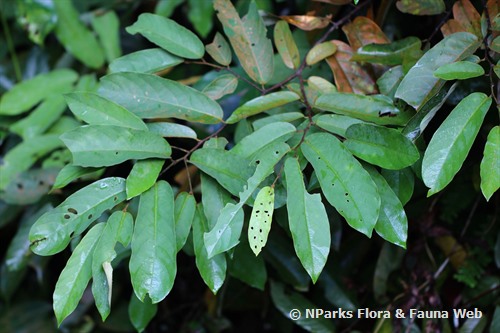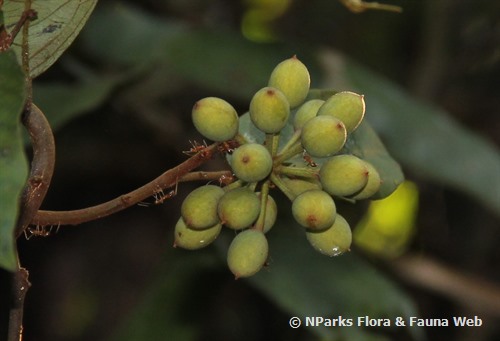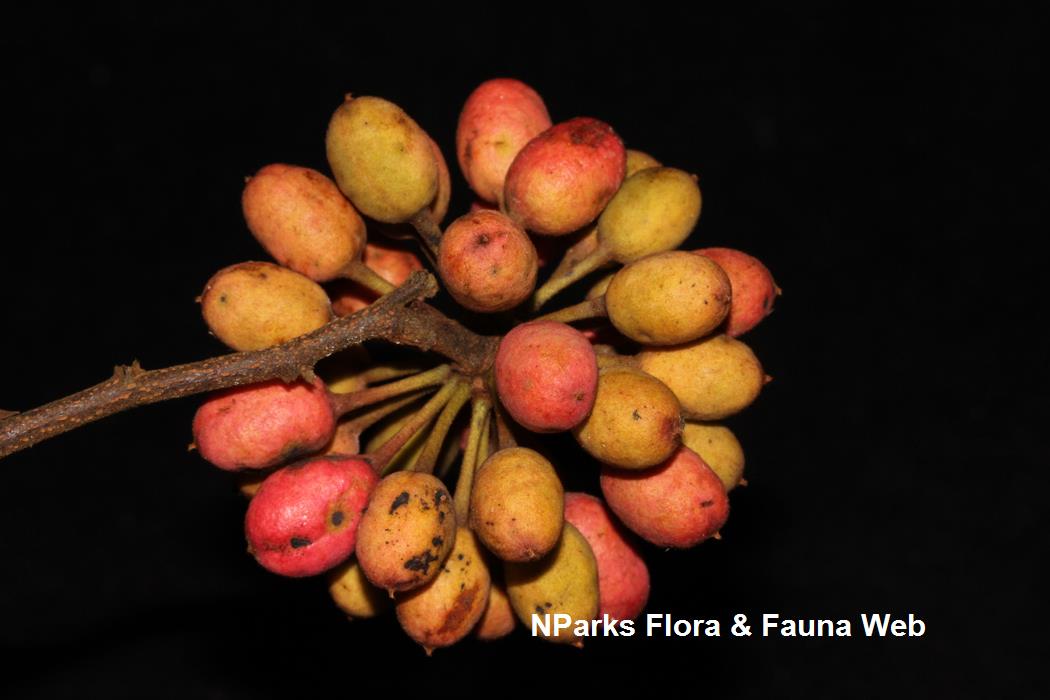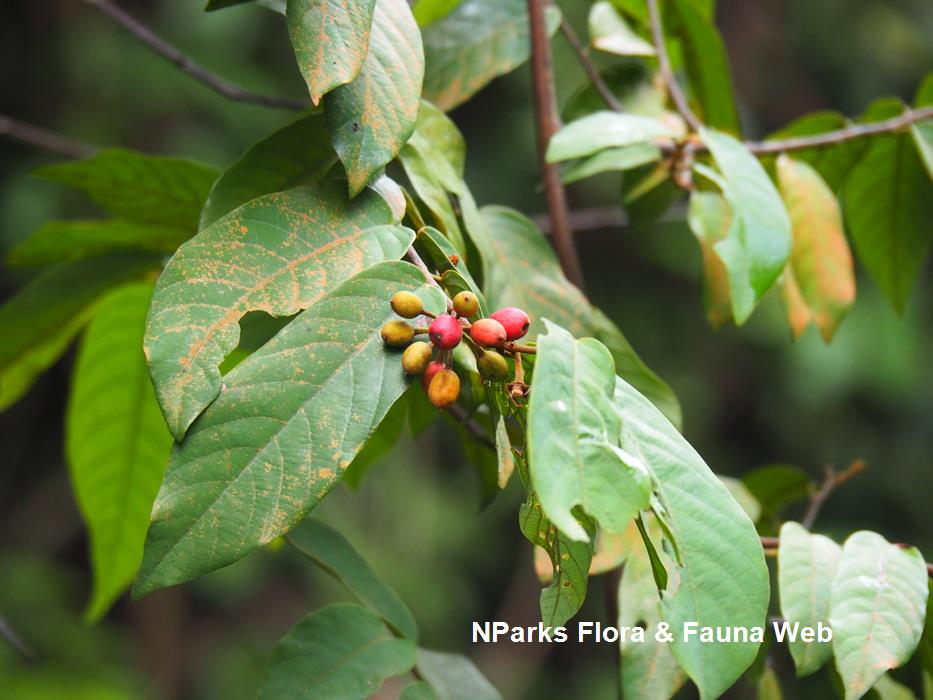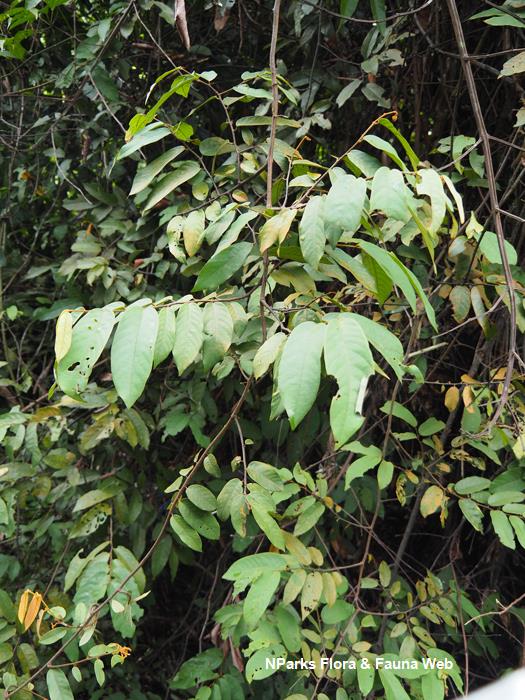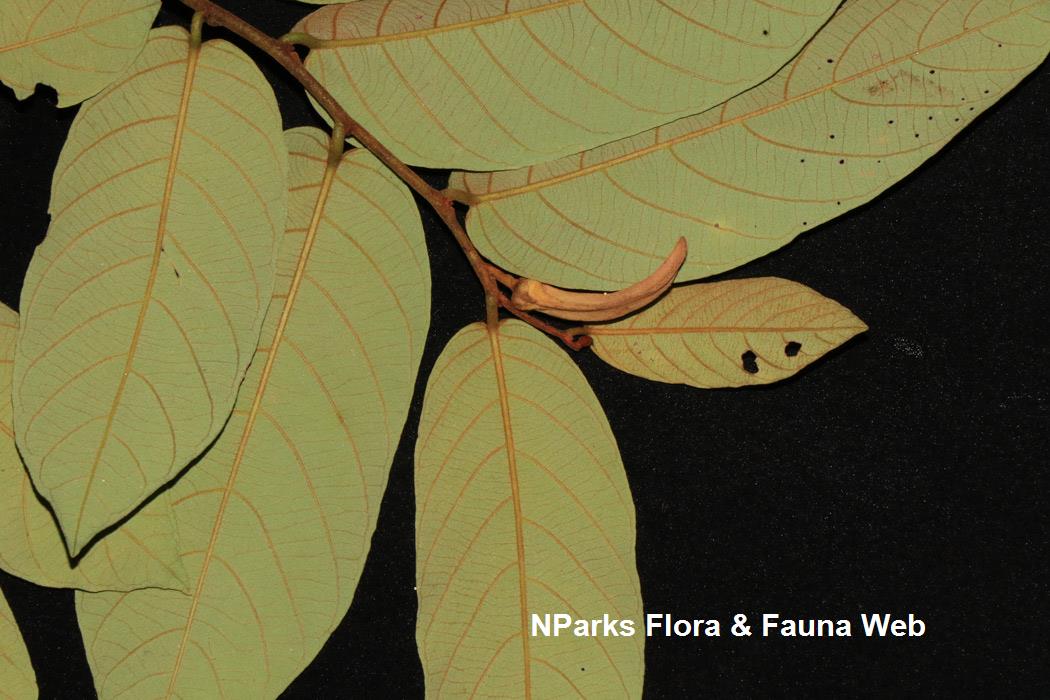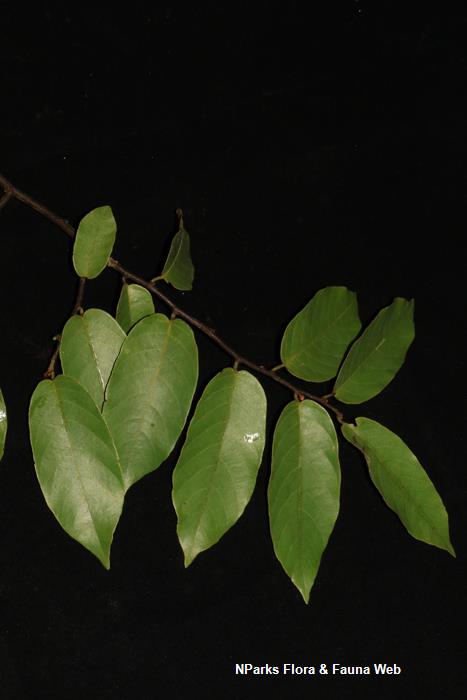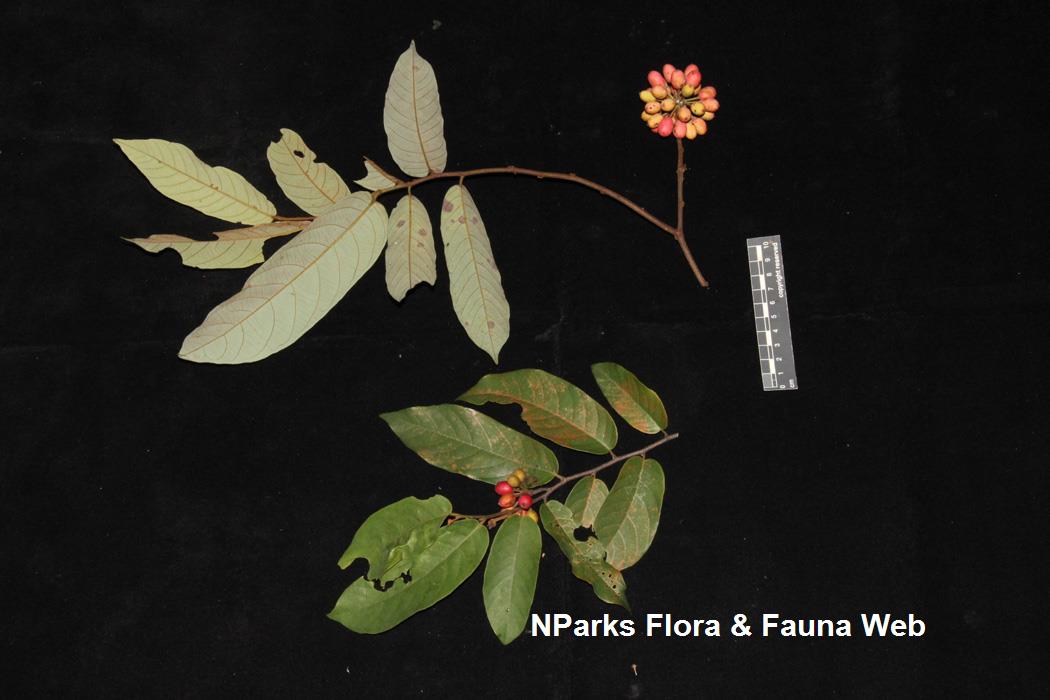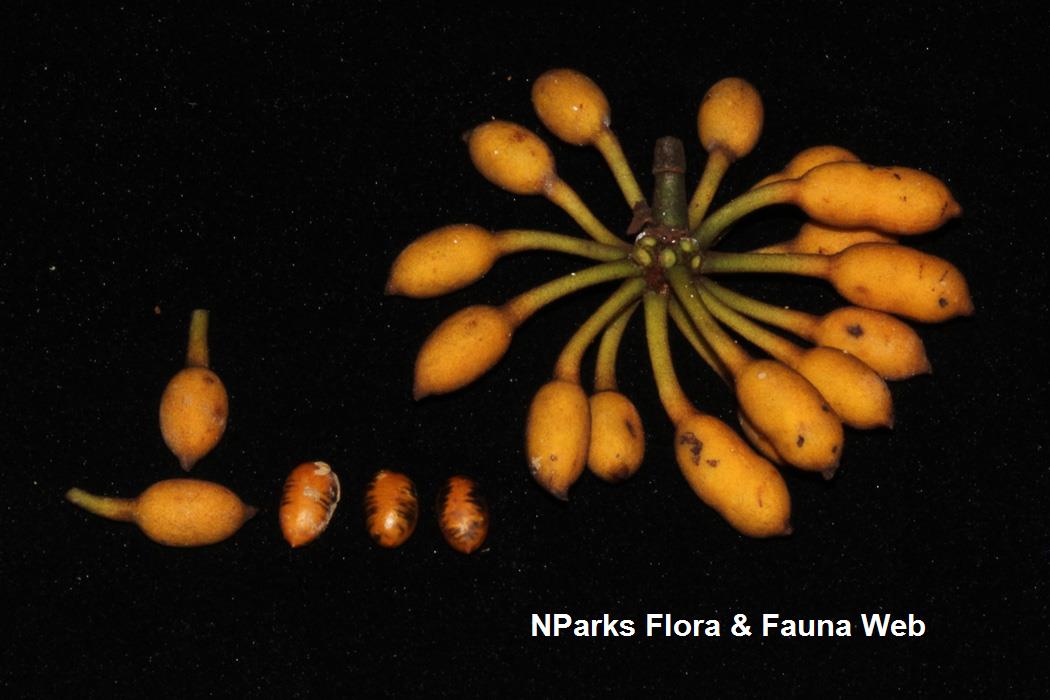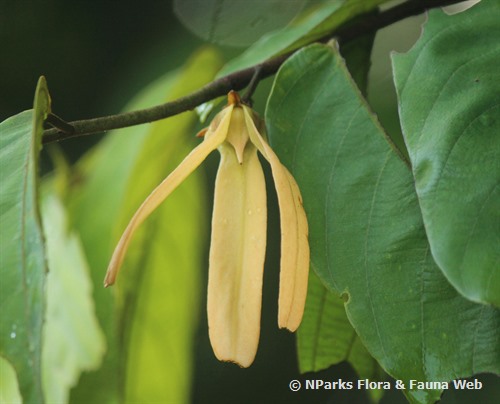
Name
Classifications and Characteristics
| Plant Division | Angiosperms (Flowering Seed Plants) (Dicotyledon) |
|---|---|
| Plant Growth Form | Climber |
Biogeography
| Native Distribution | Peninsular Malaysia, Singapore, Sumatra and Borneo |
|---|---|
| Native Habitat | Terrestrial |
| Preferred Climate Zone | Tropical |
| Local Conservation Status | Native to Singapore (Vulnerable (VU)) |
Description and Ethnobotany
| Growth Form | It is a large woody climber. |
|---|---|
| Foliage | Leaf is obovate (3.5 – 16 cm long and 2 – 6 cm wide), thin and papery. The underside of the leaf is covered with whitsh surface which rubs off easily. The leaf base is rounded to slightly pointed (auriculate) while the leaf tip is short or rounded. Both the mid rib and secondary veins (9 – 11 pairs) are prominent below. The petiole is 0.3 – 1 cm long. |
| Flowers | Borne on a 2 – 3 cm long flowering stalk, flower is cream coloured with sepals (0.6 cm long), outer petals (6 cm long and 0.6 cm wide) and inner petals (0.8 cm long and 0.4 cm wide). Flower comprises of many stamens and carpels |
| Fruit | Fruits are borne in a cluster of 20 or more on a 3 – 8.5 cm fruiting stalk. Each fruit is almost round to elliptical (0.8 – 1.2 cm long and 0.7 cm wide) and usually covered in brown hairs, but sometimes may be smooth. Seed is elliptical, about 0.7 – 1.1 cm long and 0.6 cm wide. |
| Habitat | It is found in lowland forest. |
| Associated Fauna | It is pollinated by insects. |
Landscaping Features
| Landscape Uses | Trellis / Arbour / Pergola |
|---|
Fauna, Pollination and Dispersal
| Pollination Method(s) | Biotic (Fauna) |
|---|
Plant Care and Propagation
| Light Preference | Full Sun, Semi-Shade |
|---|---|
| Water Preference | Moderate Water |
References
| References | Turner, I.M.. 2012. Annonaceae of Borneo: a review of the climbing species . Gardens Bulletin Singapore. 6. 371 - 479 |
|---|
Image Repository
Others
| Master ID | 33789 |
|---|---|
| Species ID | 8205 |
| Flora Disclaimer | The information in this website has been compiled from reliable sources, such as reference works on medicinal plants. It is not a substitute for medical advice or treatment and NParks does not purport to provide any medical advice. Readers should always consult his/her physician before using or consuming a plant for medicinal purposes. |

